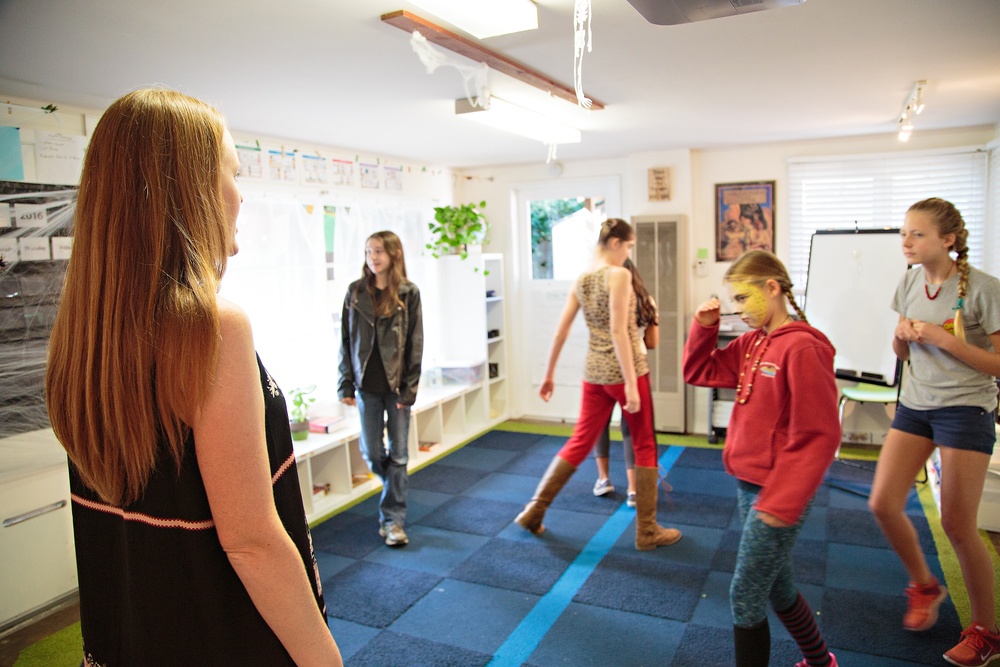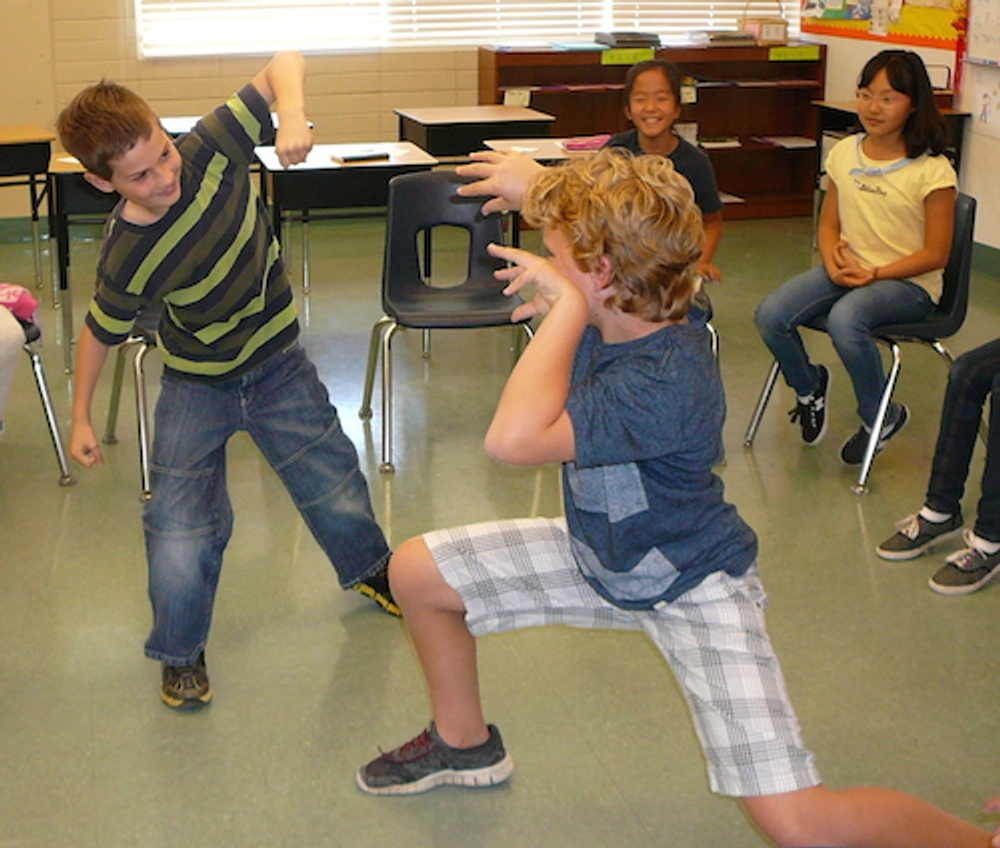This mini-course uses Writerly Play games to activate the writing process. Through visualization, movement, and improvisation, writers will move beyond a pencil-and-paper understanding of their stories and poems and gain a more layered, rich perspective.

SPACE AND TOOLS NEEDED
Open Space
Many of the games in this series invite players to stand up and move. However, I've suggested adaptations for small or shared-use spaces, including ways to play that involve visualization or drawing instead of movement. When possible, movement is preferred.
Paper and Pencil
Each game has a downloadable PDF, and often the games also encourage use of scrap paper to take notes. If you're facilitating the full series for a group or class, you may want to provide a folder to help organize notes and materials.
Interactive Writing Tool
There are two versions of this course–one for educators, and one for youth to use on their own. For the youth version, we've designed a question-and-answer tool to replace the PDF. In this educator version, we've included the link to that interactive tool at the end of each lesson. We realize you may be in a classroom where writers have access to devices or computers and/or you prefer a paperless workflow.
If writers would like a summary of their writing, we can send it via email. For safety purposes, we request that the email be sent to an educator or parent and forwarded on to the student writer. Each summary will arrive with the student's name as entered, so coach students with the same name to use an identifying last initial.
SETTING UP GAMES
Online
One way to experience these videos is to share your screen with a full class. If you prefer your students work on this project independently, you are welcome to share the YouTube playlists with your students as a way to more easily share these lessons from afar. You can access those playlists here:
Craft a Winning Story:
Craft a Winning Poem:
Full Class (in classroom)
If you play movement or improvisation games with your students regularly, similar "rules of play" will apply. If you do not, before playing the games via video, you may want to:
- Define a playing space
- Practice moving, freezing, and moving again within that playing space.
- Practice moving expressively (as if they are moving through water, sneaking into a quiet space, etc) without distracting other players.
Here, you may need to coach your students to "turn their voices off" or "stay in their own space," or "choose to move where they won't be distracted." Some classes may also need practice getting past peer discomfort or self-consciousness. I find that varying the speed of movement can help shake them out of their heads and into their bodies. ( For instance, "You're moving at a speed four. Can you try a speed six, without running?")
Consider introducing a chime or other sound cue for "freeze," in case your students become overly excited while playing. The games are designed to facilitate individual thinking rather than performance and all players move and think simultaneously. Thus, the games generally have a calming, focusing effect, however each class dynamic is unique. You'll know best how to set your class up for success.
Small Group
If you're using the games in a small group, and especially if other students are in the room doing other activities, movement may be more difficult. When writers feel they have an audience, it's difficult to focus on thinking and visualization.
In these cases, I'd recommend that writers visualize instead of physicalizing the character movement exercises. They might put their heads down on a table, or sit on floor pillows and close their eyes to help themselves focus.
Individual Player
Similarly, an individual player may want to use earphones and close their eyes. If they're at home or in a space that allows it, they might even lay down and treat the game as a meditation. Of course, they'd also be welcome to walk around in their space, but they may find it difficult to truly engage with the improvisation without becoming self-conscious.

WHY GAMES: THE GOAL OF WRITERLY PLAY
No matter the method (movement, visualization, or otherwise), our goal is to help writers tap into the power of their imaginative mind. We 're inviting them into a sensory experience that adds richness to their writing. Recent research has shown that analytical thinking inhibits our empathy and vice versa. Games give writers the opportunity to generate ideas before they move into pencil-and-paper thinking. In this way, they tap into meaningful, empathetic material that is connected to their hearts. Once they've drafted, they can then tap into their analytical, strategic thinking to refine and polish their work.

